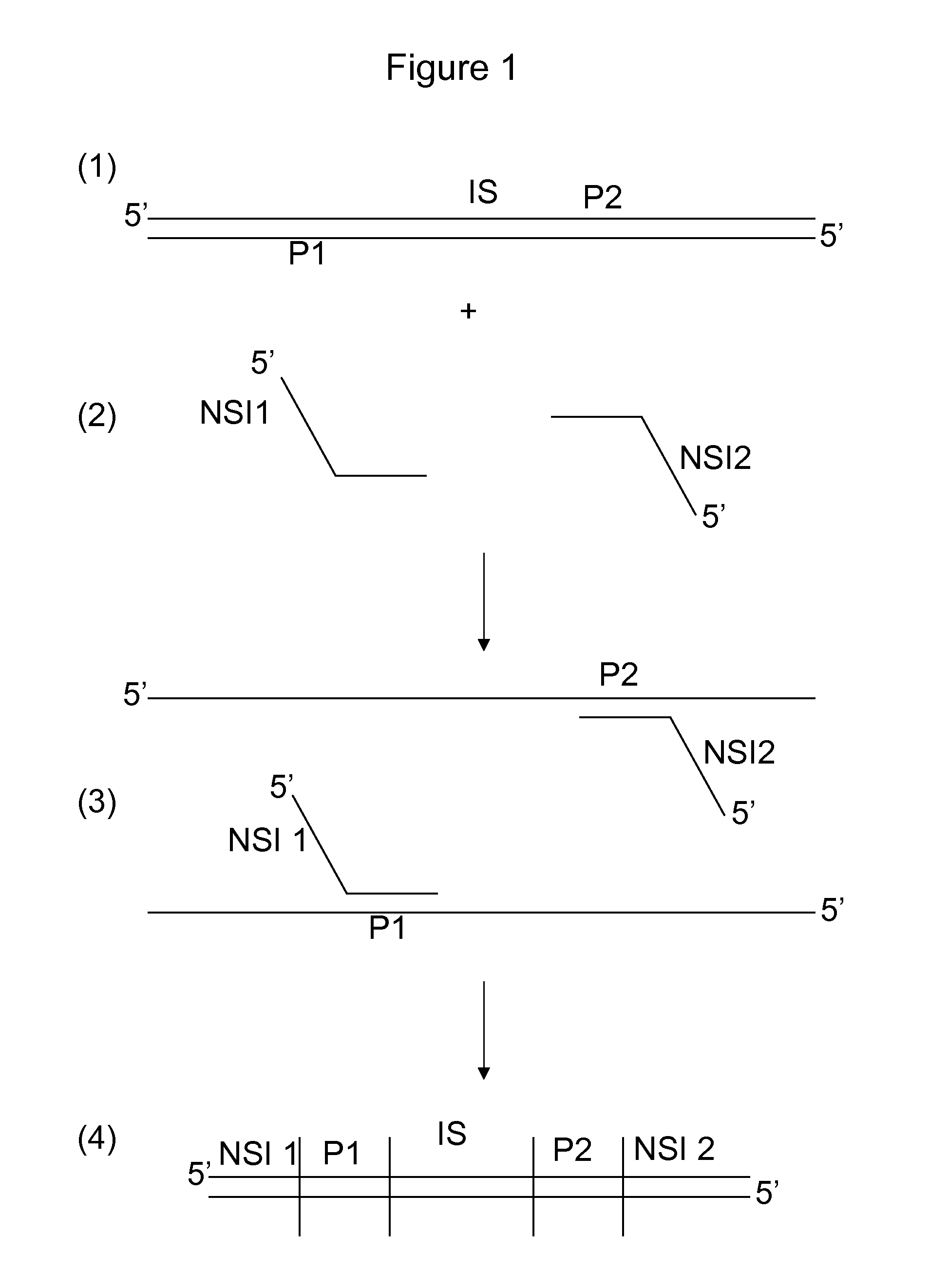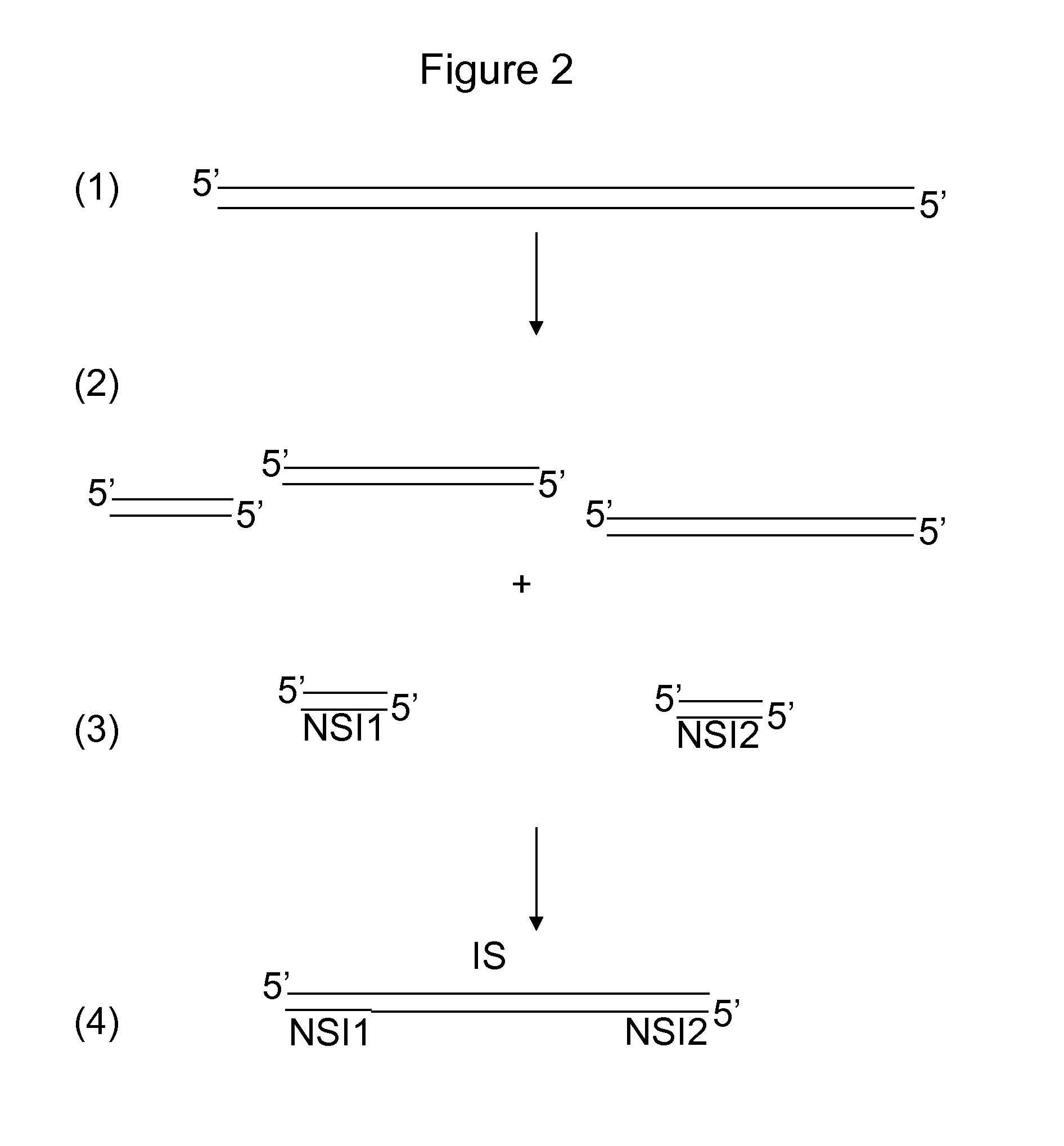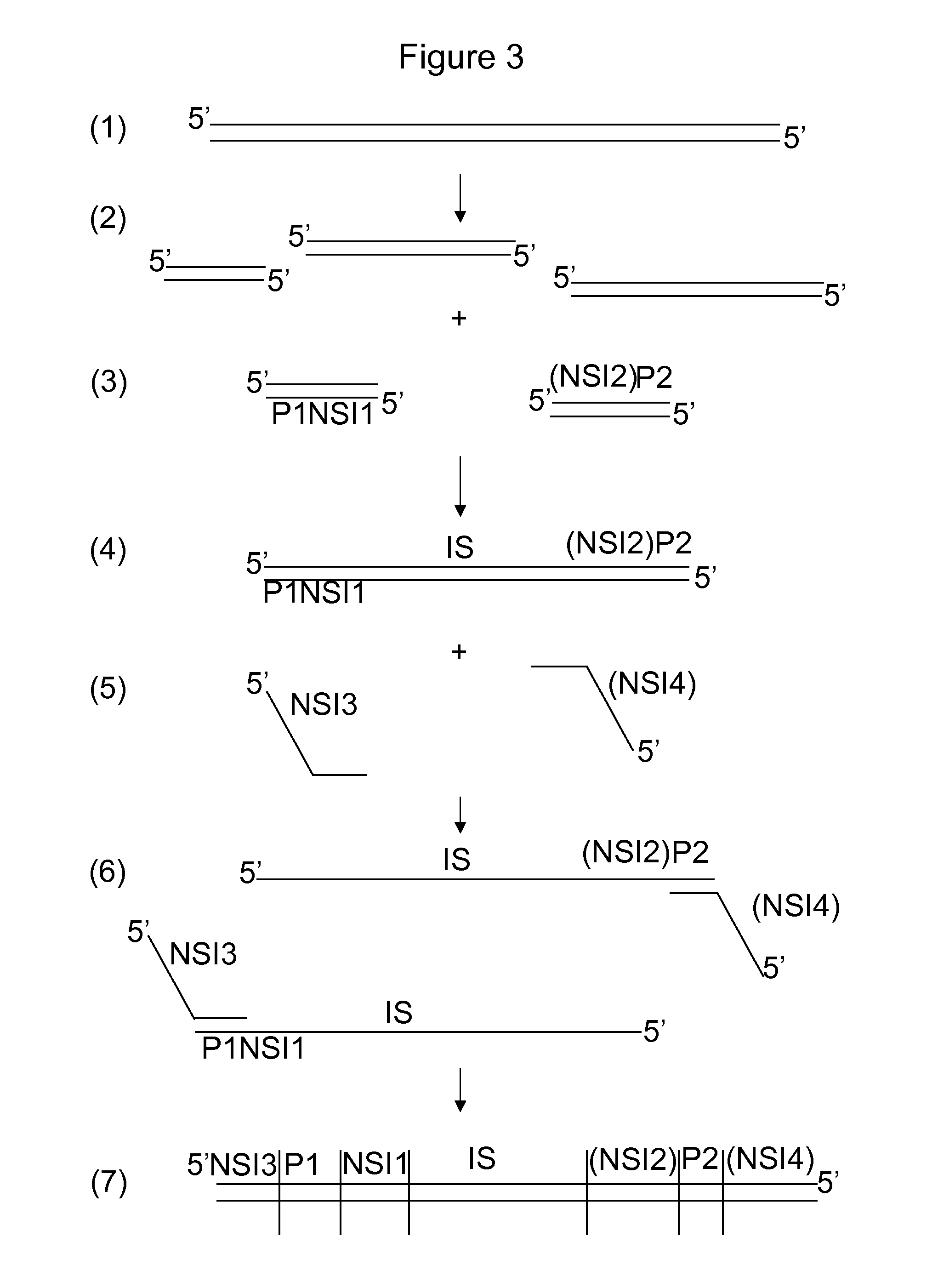High throughput screening using combinatorial sequence barcodes
a barcode and sequence technology, applied in the field of molecular biology, can solve problems such as bottlenecks, achieve the effects of simplifying sample preparation, reducing the number of primers and/or adapters that have to be used, and increasing the number of throughput sequencing technologies
- Summary
- Abstract
- Description
- Claims
- Application Information
AI Technical Summary
Benefits of technology
Problems solved by technology
Method used
Image
Examples
example 1
[0086]Below, two different applications for sample preparation with split barcodes are exemplified, but other sample preparation methods which involve the incorporation of two different molecules to the sample fit within the scope of the invention too:
1) PCR amplification with two barcoded primers;
2) Adaptor ligation to a sample digested with two restriction enzymes or a sample digested with a single enzyme followed by adaptor ligation 1, followed by fragmentation and blunting the fragmented ends, followed by adaptor ligation 2.
[0087]PCR Amplification
[0088]A description is provided of the functional elements of a primer pair harboring split barcodes (barcode 1 and barcode 2), which are determined by either paired-end sequencing (A) or sequencing from the same strand with two priming events (B). A schematic view is provided in FIG. 11. It is observed in FIG. 11A that the universal tail 1 (bold arrow) may be the sequence primer site 1 (i.e. the primer site that is used in sequencing) ...
PUM
| Property | Measurement | Unit |
|---|---|---|
| homogenous | aaaaa | aaaaa |
| composition | aaaaa | aaaaa |
| frequency | aaaaa | aaaaa |
Abstract
Description
Claims
Application Information
 Login to View More
Login to View More - R&D
- Intellectual Property
- Life Sciences
- Materials
- Tech Scout
- Unparalleled Data Quality
- Higher Quality Content
- 60% Fewer Hallucinations
Browse by: Latest US Patents, China's latest patents, Technical Efficacy Thesaurus, Application Domain, Technology Topic, Popular Technical Reports.
© 2025 PatSnap. All rights reserved.Legal|Privacy policy|Modern Slavery Act Transparency Statement|Sitemap|About US| Contact US: help@patsnap.com



